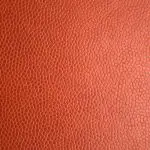In my experience, the best linings for organza are either lightweight silk or polyester. These materials keep the delicate structure of organza intact while adding some comfort against your skin. Silk is great because it adds a bit of luxury and improves the drape of the garment. On the other hand, polyester is super durable and holds up well to wear and tear, which is practical. Both options help maintain the sheer elegance of organza without adding bulk. Each lining choice has its perks depending on your needs and the occasion, and there's more to uncover about how each can enhance your organza outfits.
Table of Contents
Key Takeaways
- Silk lining enhances organza's drape and adds a luxurious feel, making it ideal for formal wear.
- Cotton lining is breathable and maintains the structural integrity of organza, suitable for everyday garments.
- Polyester lining offers durability and wrinkle resistance, supporting organza's delicate texture.
- Satin lining provides a smooth, comfortable feel and complements organza's sheer appearance.
- Lightweight interfacing should match organza's color and weight to preserve its natural flow and appearance.
Understanding Organza Fabric
Organza is a lightweight, sheer fabric traditionally made from silk, though modern varieties might include synthetic materials like polyester. I've found that its unique texture and crispness make it a popular choice for evening wear, bridal gowns, and other high-end fashion garments. It's essential to know that organza, despite its delicate appearance, has a somewhat stiff texture, which allows it to hold its shape well.
This fabric is woven in a plain weave, which is one of the simplest and most straightforward weaving techniques. This method involves the interlacing of warp and weft threads in a crisscross pattern, which contributes to organza's sheer nature. I've noticed that silk organza tends to have a slight sheen, while the synthetic versions are a bit more matte and can feel slightly rougher to the touch.
Because of its transparency, organza can be tricky to work with, especially for those not used to handling sheer fabrics. I always recommend taking extra care when cutting and sewing to maintain its delicate structure. Learning about the specific characteristics of organza not only helps in selecting the right type for your projects but also in achieving the best results when working with this exquisite material.
Characteristics of Ideal Linings
When I'm picking a lining for organza, I always consider a few key characteristics.
It's important that the weight of the lining matches the organza, so it doesn't weigh it down or alter its shape.
Also, the color and feel of the lining should complement the organza to ensure a perfect final look.
Fabric Weight Considerations
Choosing the right weight for a lining is crucial for maintaining the structure and flow of organza garments. If the lining's too heavy, it can weigh down the organza, making the garment look saggy and misshapen. On the flip side, a lining that's too light mightn't support the fabric enough, leading to a lack of definition that can spoil the elegant appearance organza is known for.
I've found that lightweight silks or synthetics work best. They provide just enough weight to enhance the organza's natural drape without overpowering it. It's a delicate balance, but getting it right means your organza outfits will hang beautifully and move gracefully, exactly as intended. Always test a small sample to be sure it complements the organza perfectly.
Color Compatibility Factors
I've learned that the color of the lining can significantly impact the overall look of an organza garment. It's crucial to pick a lining color that complements or subtly contrasts with the organza.
If you're aiming for elegance, a matching shade creates a seamless look. For a bit of drama, go for a stark contrast that pops through the sheer fabric. But remember, the hue of the lining can alter the perceived color of the organza. Light colors tend to brighten, while dark tones can give a richer, deeper appearance.
It's all about the effect you want to achieve. Always consider the event and lighting where the outfit will be worn, as these factors can influence how colors appear.
Drape and Feel Compatibility
The ideal lining for organza shouldn't only match in color but also complement its drape and feel. When you're picking a lining, think about how it moves. Does it flow nicely with the organza, or is it stiff, making the organza bunch up awkwardly? You don't want that.
The feel is also crucial. Organza can be a bit scratchy, so a soft lining is a game changer. It should feel good against the skin, because comfort really matters. I'd recommend materials like silk or rayon. They're light and maintain the breezy nature of organza without overpowering it.
Get this right, and your fabric won't only look stunning but feel wonderful too.
Cotton as a Lining Option
Many sewers prefer cotton as a lining for organza because it's breathable and easy to handle. I've found this to be true in my own projects, especially when I'm working on summer clothing. Cotton doesn't just keep things comfortable; it also maintains a nice structure without adding bulk. This is crucial when you're dealing with something as fine and delicate as organza.
From my experience, cotton lining offers more than just comfort. It's also incredibly practical for frequent wear items. Unlike more luxurious materials, cotton can withstand regular washing and doesn't wear down as quickly. This makes it an excellent choice for everyday garments that need to endure the rigors of daily life. Plus, it's generally less expensive, which is always a bonus when you're budgeting for fabric costs.
Another point to consider is cotton's ability to absorb moisture. This means that any sweat or dampness will be wicked away from the skin, keeping the wearer dry and comfortable. It's a natural fiber, which is a big plus for those of us trying to stick to more environmentally friendly materials. All in all, cotton lining is a solid, practical choice for organza garments.
Silk Lining Benefits
Let's talk about why silk is a great choice for lining organza.
It not only makes the fabric hang beautifully but also feels super comfortable against the skin.
Plus, it adds a good deal of strength, helping your garment last longer.
Enhances Fabric Drapability
Silk lining significantly improves the drape of organza, making it flow more elegantly. When I'm choosing fabric for a project that requires a sophisticated touch, silk is my go-to for lining. It's not just about aesthetics; the practical benefit is undeniable. Silk allows organza to maintain its shape while enhancing its natural, graceful movements. This is crucial for garments where you want a smooth, flawless finish without stiffness.
The interaction between silk and organza also aids in achieving a professional-looking piece. The silk complements the sheer nature of organza by subtly adding to the body and volume without overpowering the delicate fabric. It's a perfect partnership that brings out the best in both materials, especially in formal wear.
Promotes Comfortable Wear
Using silk as a lining also makes organza outfits more comfortable to wear. It's all about the feel against your skin.
Silk, with its smooth and soft texture, feels luxurious and gentle. It's a natural fiber that's breathable, which means it helps regulate your body temperature. This is super handy if you're wearing the outfit for long hours, as it keeps you cool when it's hot and warm when it's chilly.
Plus, silk doesn't irritate the skin, unlike some synthetic linings that can cause discomfort or even allergic reactions. So, when I'm picking out something that has organza, I always look for silk lining. It seriously boosts the comfort level, making any event feel a bit more enjoyable.
Increases Durability
Adding a silk lining not only enhances comfort but also significantly increases the durability of organza garments. Let's dive into why this is the case.
Organa, by its nature, is quite delicate and prone to wear and tear. It's a beautiful fabric, sure, but it's not known for its strength. That's where silk comes in. When you line organza with silk, you're essentially giving it a much-needed support system.
Silk's natural strength and resilience provide a protective layer, reducing the strain on the organza fibers during wear and handling. This means your organza outfit won't just look good; it'll last longer too.
Polyester Lining Properties
Polyester lining offers excellent durability and resistance to wrinkles, making it a practical choice for backing organza fabrics. I've found that its strength really supports the delicate nature of organza, allowing the fabric to maintain its shape and flow without compromising on the sheer beauty. It's pretty resistant to shrinking too, which is a big plus when you're dealing with garments that need to look sharp all the time.
Another great thing about polyester is its moisture-wicking properties. This means it doesn't absorb moisture as quickly as other fabrics might, keeping you comfortable if you're wearing it on a hot day or during a busy event. It's also relatively easy to care for. You can throw it in the wash without worrying about special washing conditions, which isn't always the case with more delicate linings.
Cost-wise, polyester lining is quite affordable. This makes it an attractive option if you're working on a project with a tight budget but still want something that looks and feels good. It comes in various weights and finishes, so you can choose one that best matches the weight and drape of the organza you're using. This versatility really seals the deal for me when picking the right lining for organza.
Satin for a Luxurious Feel
When I consider lining materials for organza, satin really stands out for its luxurious feel. Its smooth texture not only looks great but also adds a wonderful shine that enhances the outer fabric.
Plus, it's comfy and versatile, making it a top choice for various clothing styles.
Satin's Smooth Texture
Satin's smooth texture gives organza a luxurious feel that's hard to match. When I line organza with satin, I'm always amazed by how the two fabrics complement each other. The satin not only feels incredibly soft against the skin, but it also helps the organza to drape beautifully. It's like they're made for each other.
Choosing the right satin lining can make a big difference too. I prefer a medium-weight satin because it provides enough body without weighing down the organza. This combination is perfect for evening wear or bridal gowns where you want that extra touch of elegance. Plus, it's pretty easy to sew with, which is always a bonus.
Enhancing Shine
I've found that lining organza with satin not only enhances its shine but also adds a luxurious feel to the garment. When organza catches the light, the satin underneath can make it sparkle even more. It's like adding a layer of gloss that makes the fabric look richer and more vibrant.
This effect is fantastic for evening wear or any outfit you want to stand out. Satin, with its inherent gloss, complements the sheer texture of organza beautifully, highlighting its ethereal quality without overpowering it.
Comfort and Versatility
Beyond enhancing shine, using satin as a lining also significantly boosts the comfort and versatility of organza garments. The smooth texture of satin ensures that the organza doesn't feel scratchy against the skin, which is a common complaint. This makes organza outfits much more wearable for longer periods, especially at events where comfort is key.
Satin's adaptability also plays a huge role. It complements organza in both formal and casual settings, making it a go-to choice for designers who aim for versatility in their creations. Whether it's a wedding dress or a summer blouse, satin lining makes the organza piece more functional without compromising on style. I've noticed this not only enhances the garment's appeal but also its marketability.
Interfacing With Organza
When working with organza, using the right interfacing is crucial to maintain its delicate structure. Choosing an interfacing that's too stiff or heavy can completely change the drape and feel of the organza, which is something you definitely don't want. So, it's all about finding that perfect balance that complements the fabric without overpowering it.
Here are three key points to consider when selecting interfacing for organza:
- Weight and Flexibility: Always opt for a lightweight interfacing. This preserves the natural flow of the organza. Think about materials like lightweight fusible or sew-in interfacing that won't add bulk or stiffness.
- Type of Interfacing: Fusible interfacing is popular for its ease of use, but with organza, you've got to be extra careful. The heat required to bond fusible interfacing can sometimes damage delicate organza. A sew-in interfacing might be a safer choice to avoid any heat damage.
- Color Matching: Since organza is often sheer, choose an interfacing that closely matches the color of your fabric. This ensures it remains invisible and doesn't alter the appearance of your organza in any way.
Blending Linings With Organza
Now that we've covered interfacing, let's discuss the best linings to use with organza to ensure your project looks and feels perfect. When you're choosing a lining for organza, you're looking for something that doesn't just complement it aesthetically, but also performs well with it. Silk charmeuse is my go-to because it's smooth and lightweight, matching organza's delicate nature without adding bulk.
You might also consider a polyester lining if you're on a budget. It's less expensive and still provides a decent drape, though it doesn't breathe as well as silk. I find that cotton can be a good alternative, too. It offers breathability and, with a fine weave, won't detract from the organza's elegant appearance.
When blending linings, think about the color and weight. A lighter lining can enhance organza's translucent quality, creating a subtle and sophisticated look. Avoid heavy or dark linings that can overpower the sheer nature of organza.
Lastly, always test a small piece first. This step ensures that the lining and organza work well together, both in stitching and finish. It's all about preserving that gorgeous, airy feel while providing the structure your garment needs.
Seasonal Considerations for Linings
Choosing the right lining for your organza project also means considering the season in which it'll be worn. After all, you want your creation to be as comfortable as it's beautiful, no matter the weather.
Let's break down what types of linings work best for different seasons:
- Spring and Summer:
- Opt for lightweight, breathable linings like cotton or silk. These materials keep the garment light and airy, perfect for warmer weather. Silk has the added benefit of a luxurious feel, enhancing the elegance of organza.
- Fall and Winter:
- Choose heavier linings like polyester blends or even a light wool. These provide more insulation, which is crucial in cooler weather. Polyester is durable and holds up well against the elements, making it a practical choice for the colder months.
- All-Season Flexibility:
- Consider a medium-weight rayon or acetate lining. These materials are versatile enough to provide comfort in most climates and maintain the flowy, graceful drape of organza.
Care and Maintenance Tips
Properly caring for your organza garments ensures they stay beautiful and last longer. Here, I'll break down some straightforward tips that help you maintain your organza without a fuss.
First off, always check the care label. Some organza can be hand washed, but a lot of the time, dry cleaning is your safest bet to avoid damage. If you're washing it at home, use cold water and a gentle detergent. Don't wring it out; just lay it flat on a towel to dry. Ironing should be done cautiously—use a low heat setting and preferably iron on the reverse side to prevent scorching.
To keep you in the loop, here's a quick table summarizing key points:
| Do's | Don'ts |
|---|---|
| Check labels | Wring it out |
| Use gentle detergent | Use hot water |
| Iron on low | Store without care |
Last but not least, storage is crucial. Don't just throw organza in with all your other stuff. Hang it up or store it in a garment bag to avoid wrinkles and damage. Trust me, a little care goes a long way with this delicate fabric!
Frequently Asked Questions
Can Recycled Materials Be Used as Organza Lining?
Yes, recycled materials can be used as lining, offering an eco-friendly option. They're often durable and soft, making them suitable for projects where sustainability is as important as the garment's look and feel.
How Does Lining Thickness Impact Organza Drape?
It's a game changer! Thicker lining can totally transform organza's drape, making it stiffer. I've found that lighter linings maintain that gorgeous flow we're all aiming for. It's all about finding the right balance.
Are There Hypoallergenic Lining Options for Organza?
Yes, there are hypoallergenic options for lining organza. I'd recommend silk or cotton as they're natural, breathable, and less likely to irritate sensitive skin. They also maintain the fabric's delicate appearance and feel.
What Is the Cost Comparison Between Different Linings?
I've found that silk lining is pricier compared to cotton or polyester, but it offers superior comfort and drape. It's worth considering your budget and the garment's purpose when choosing the right lining.
Is Flame-Retardant Lining Available for Organza?
Yes, flame-retardant lining is available for organza. It's great for added safety, especially in environments where fire safety is a priority. I'd recommend checking specific product certifications to ensure effectiveness and quality.
- Technology's Impact on Fashion Fabrics - July 18, 2024
- Upcoming Season's Trendy Fabric Patterns - July 18, 2024
- Eco-Friendly Fashion Brands to Watch - July 18, 2024






